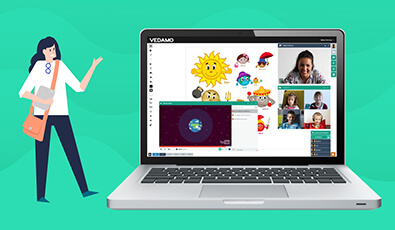

03.08.2018
By Achim Steiner
"The clean energy future isn’t just possible and desirable – it’s essential. On a vital, basic level, our decisions and actions will determine whether the Anthropocene will be an age in which human ingenuity and responsibility will allow 10 billion people to have access to modern forms of energy without compromising the vital life support systems of our planet"
- Achim Steiner, UNEP Executive Director and UnderSecretary-General of the United Nations
Subject - Science & technology, Geography, Citizenship education, Social studies
Learning Outcomes
- To understand the framework of the Global Goals for Sustainable Development
- To understand what renewable energy is and how it compares to non-renewable energy
- To explore the advantages of renewable energy
- To develop innovative solutions for renewable energy
Preparation
- Read the notes to teachers about renewable energy in appendix 3
- Prepare a board to write students’ suggestions
- Print or make available the case study included in appendix 4
- Prepare a template for students to use when developing an innovative renewable energy campaign geared towards convincing their school or community to switch to renewable energy sources
Step 1: Introduce the Global Goals
Show students the World’s Largest Lesson 2015 animated film - Part 1: Intro to the Global Goals. http://worldslargestlesson.globalgoals.org/introduce-the-global-goals/ This will either introduce the Global Goals or serve as a good reminder of what they are and how we are all connected to them.
Note: There is a 3 minute cut down version of this film in English only at: https://vimeo.com/142124730 If you aren’t able to show the animation, read the script in appendix 1 or briefly summarise the Global Goals explaining: The Global Goals for Sustainable Development are a plan developed by the United Nations and agreed upon by all countries to work towards 2030 to:
- Fight global inequality.
- End extreme poverty.
- And Respect our planet.
Important Teaching Point Students should clearly understand that there is a global plan for everyone no matter who they are or where they live, to find solutions to the most pressing issues for people and the planet.
Step 2 : What Can We Do To Achieve the Goals?
Show students the World’s Largest Lesson 2016 new animated film part 2 –
Take Action: invent, innovate, campaign http://worldslargestlesson.globalgoals.org/introduce-the-global-goals/
It is a 4 minute animated film looking at examples from around the world of young people using invention, innovation and campaigning to contribute to the ambition of the Global Goals. Note: If you are not able to show the film then read the script from the animation in Appendix 2.
Step 3: Focus on Goal 11
Explain to students that the rest of the lesson will focus on: Global Goal #7: Affordable and Clean Energy: Ensure access to affordable, reliable, sustainable and modern energy for all.
Step 4: Discussion: What are renewable energy sources?
The Earth’s resources are being depleted faster than they can be replenished. In fact, humanity uses the equivalent of 1.6 planets to provide the resources that are used and to absorb waste, which means it now takes the Earth one year and six months to regenerate what is used in a year. The time for adopting and promoting more sustainable ways of living that are in harmony with nature is now. One way to do this is through the energy sources that are used around the world.
- Begin a discussion about renewable energy – what is renewable energy and how does it differ from non-renewable energy?
Ask students to think broadly about the different forms of energy that are available for use (fossil fuels and non-fossil fuels), including those we interact with in our daily lives, e.g. energy from the sun, wind and water. Agree definitions as a class and write this on the board.
Teacher’s note:
Definitions from BBC Bitesize
Renewable energy: energy sources that once used are quickly replenished, and can be used again and again
Non-renewable energy: energy sources that cannot be replaced once used up (within a human lifetime)
Fossil fuels: Fuels such as coal, oil, gas which are mined from the Earth and are burnt to release energy, and greenhouse gases as a byproduct. They are formed from broken down plants and animals that died a very long time ago
- Ask students to write down where they think their energy in their city or region comes from. Then, using a graph or pie-chart on the board, show students the actual energy sources of their city or region.
Your local or national energy mix can be found from the relevant government department, for example: For Canada: http://www.nrcan.gc.ca/earth-sciences/geography/atlas-canada/selectedthematic-maps/16872 For USA: http://www.eia.gov/energyexplained/index.cfm?page=electricity_in_the_united_states Highlight the need for renewable energy as one of the main ways to help address global challenges like climate change and deforestation. Relying on renewable sources of energy means less burning trees to produce electricity. Burning trees for electricity can create more carbon pollution than coal, gas and oil and it destroys our forests and our heritage (Source: https://www.nrdc.org/resources/our-forests-arent-fuel)
- Looking ahead: the energy mix is expected to change dramatically over the next 20 years, but will it be enough to avoid a dangerous rise in global average temperature of over 2 degrees celsius?
Detail in this video by UNEP Bloomberg New Energy Finance: https://vimeo.com/170955033 Or read 8 key findings from their 2016 report: https://www.bloomberg.com/company/newenergy-outlook/#findings
To read more Click Here



